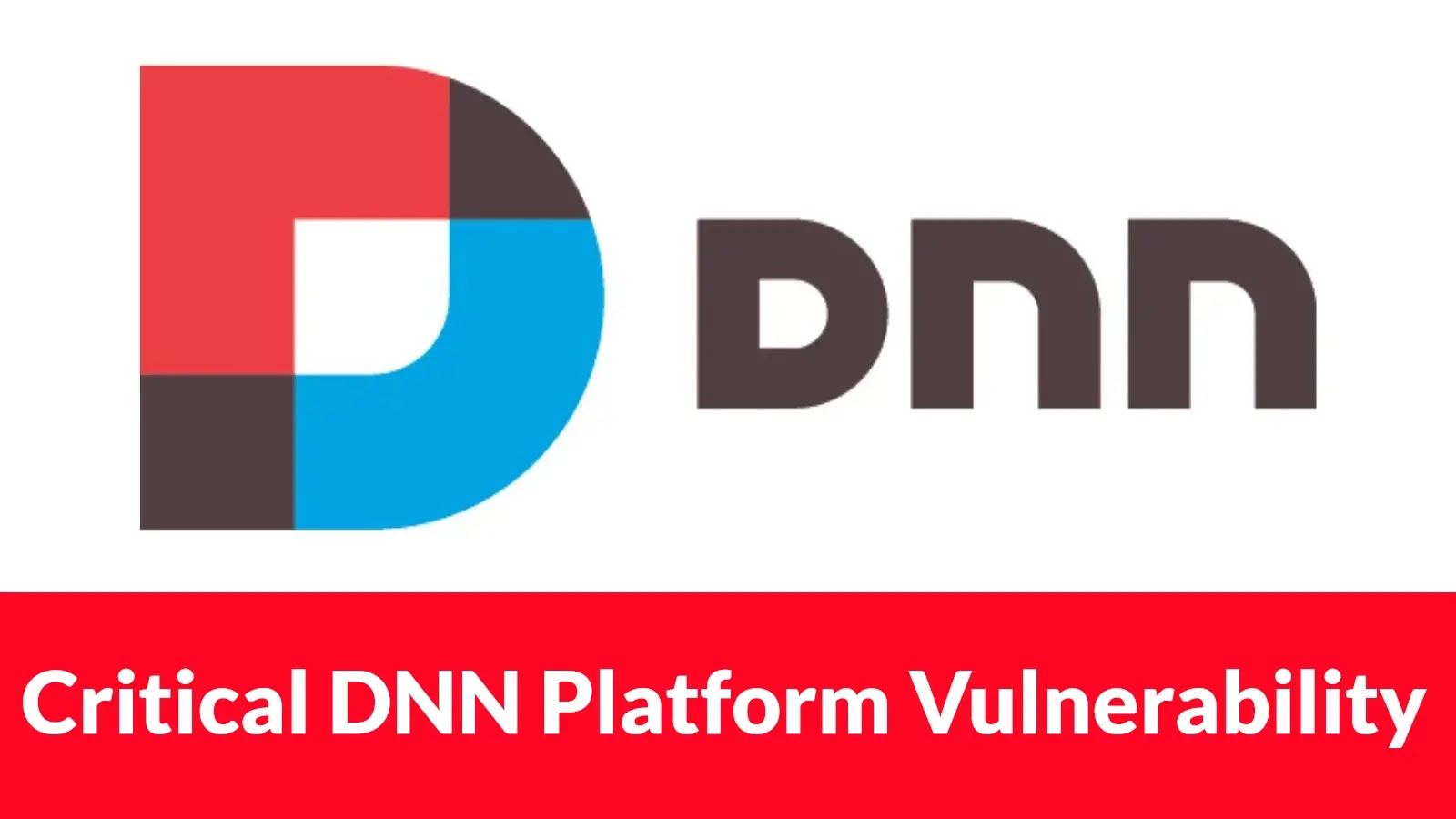
Critical DNN Platform Vulnerability Let Attackers Execute Malicious Scripts
Urgent Alert: Critical DNN Platform Vulnerability Exposes Websites to Malicious Script Injection
Website administrators managing DotNetNuke (DNN) Platform installations are urged to take immediate action. A severe stored cross-site scripting (XSS) vulnerability, tracked as CVE-2025-59545, has been identified, posing a significant risk to websites powered by this widely-used content management system. This flaw, rated with a critical severity score of 9.1 out of 10, enables attackers to execute arbitrary malicious scripts, potentially leading to data theft, website defacement, or further compromise of user accounts.
Understanding the DNN Platform XSS Vulnerability
The identified vulnerability specifically targets all DNN Platform versions prior to 10.1.0. A stored XSS vulnerability occurs when an attacker injects malicious code directly into a web application’s database, which is then served to unsuspecting users. In the context of DNN, this means a malicious script, once successfully injected, would be executed in the browsers of legitimate website visitors every time they accessed the compromised page or feature.
Such an attack can have far-reaching consequences:
- Session Hijacking: Attackers can steal user session cookies, gaining unauthorized access to user accounts.
- Defacement: The appearance and content of the website can be altered.
- Malware Distribution: Malicious scripts can redirect users to phishing sites or download malware onto their devices.
- Data Exfiltration: Sensitive information, including credentials or personal data, can be stolen from website visitors.
The critical nature of this vulnerability underscores the importance of prompt patching and rigorous security practices for any organization leveraging the DNN Platform.
Remediation Actions: Securing Your DNN Installation
Addressing this critical vulnerability requires immediate attention. The primary and most effective remediation is to update your DNN Platform installation.
- Upgrade to DNN Platform Version 10.1.0 or Later: This is the most crucial step. The vendor has released a patch in version 10.1.0 that addresses CVE-2025-59545. Ensure you follow the official DNN upgrade procedures carefully, backing up your data beforehand.
- Regular Security Audits: Periodically conduct security audits and penetration tests on your DNN installations to identify and address potential weaknesses proactively.
- Input Validation: While patching is paramount, implementing robust input validation on all user-supplied data can act as an additional layer of defense against XSS and other injection attacks.
- Content Security Policy (CSP): Consider implementing a strict Content Security Policy (CSP) header. CSP can help mitigate the impact of XSS attacks by restricting the sources from which scripts and other resources can be loaded.
- Web Application Firewall (WAF): Deploying and properly configuring a Web Application Firewall (WAF) can add another layer of protection by detecting and blocking malicious requests, including those attempting XSS attacks.
Tools for Detection and Mitigation
The following tools can aid in identifying potential vulnerabilities, scanning for malicious activity, or enhancing your DNN Platform’s security posture:
| Tool Name | Purpose | Link |
|---|---|---|
| OWASP ZAP | Web application security scanner to find vulnerabilities, including XSS. | https://www.zaproxy.org/ |
| Burp Suite Community Edition | Integrated platform for performing security testing of web applications. | https://portswigger.net/burp/communitydownload |
| Sucuri Website Security Platform | Website firewall (WAF), malware detection, and removal services. | https://sucuri.net/ |
| Cloudflare WAF | Cloud-based WAF to protect against XSS and other web attacks. | https://www.cloudflare.com/waf/ |
Protecting Your DNN Platform: A Continuous Effort
The emergence of CVE-2025-59545 serves as a stark reminder of the ongoing need for vigilance in cybersecurity. For DNN Platform users, the immediate priority is to upgrade to version 10.1.0 or later to patch this critical stored XSS vulnerability. Beyond patching, maintaining a robust security posture involves continuous monitoring, regular updates, and the implementation of comprehensive security layers. Proactive security measures are essential to safeguard web applications and their users from sophisticated and evolving threats.





